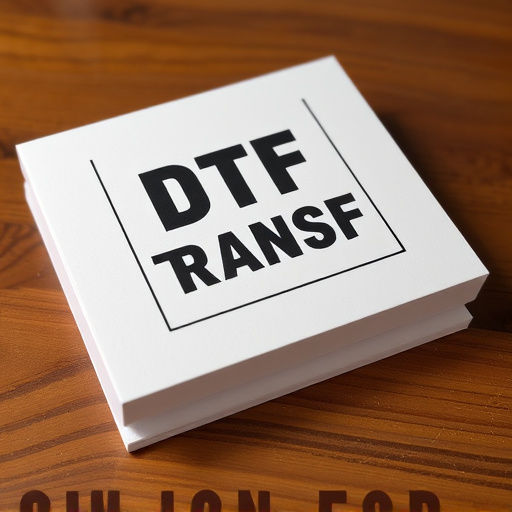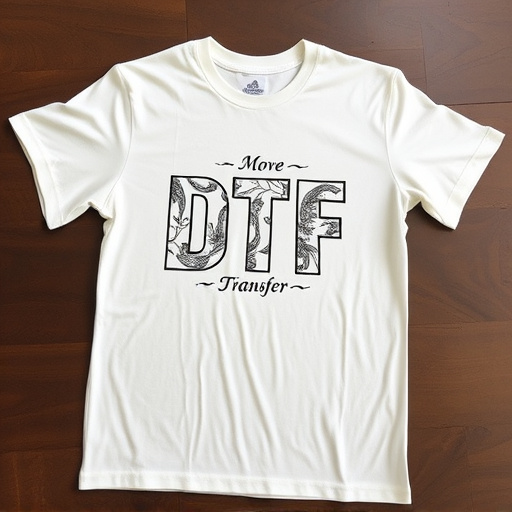Direct-to-Film (DTF) technology is revolutionizing visual content creation with high-quality prints on various surfaces. Its popularity spans sign making to vehicle wrapping due to vibrant colors and exceptional durability. Optimal DTF adhesion depends on material type, surface preparation, environmental conditions, and application method. Proper surface cleaning and pre-treatment are crucial for lasting bonds. Longevity varies based on material quality and environmental factors; regular maintenance extends lifespan. Best practices include storage in cool, dry conditions, protection from sunlight and extreme temps, gentle handling, and regular tool cleaning to preserve DTF print quality.
“Unleashing the power of direct-to-film (DTF) transfers, this comprehensive guide delves into every facet of successful DTF printing. From understanding the fundamentals of DTF technology to unraveling intricate factors influencing adhesion times, we explore what it takes for optimal results. Discover essential preparation techniques and gain insights into overcoming common challenges in DTF transfer processes. Learn about the longevity of DTF prints and best practices for maintaining their integrity over time.”
- Understanding Direct-to-Film (DTF) Transfers: A Brief Overview
- Factors Influencing Adhesion Time: An In-Depth Analysis
- Optimizing Preparation Techniques for Better DTF Adhesion
- Common Challenges and Their Solutions in DTF Transfer Processes
- Longevity of DTF Prints: What to Expect Over Time
- Best Practices for Maintaining DTF Transfers' Integrity
Understanding Direct-to-Film (DTF) Transfers: A Brief Overview

Direct-to-Film (DTF) transfers are a cutting-edge printing technology revolutionizing the way we produce visual content. This innovative process allows for high-quality prints directly onto various film surfaces, including vinyl, polyester, and polycarbonate. DTF offers a unique advantage over traditional methods by eliminating the need for intermediate layers, resulting in vibrant, durable prints with exceptional opacity. The technology has gained immense popularity among professionals and enthusiasts alike, catering to diverse industries such as sign making, vehicle wrapping, and specialty printing.
DTF Printing involves advanced equipment that precisely deposits ink onto the film, ensuring precise color reproduction and fine detail. This method enables the creation of intricate designs, from bold graphics to subtle textures, all while maintaining exceptional durability. The adhesion of DTF prints is a critical factor, and proper preparation of the substrate and application techniques are essential for long-lasting results. Understanding the optimal duration for adhesion allows professionals to ensure that these vibrant films enhance various applications without compromising their longevity.
Factors Influencing Adhesion Time: An In-Depth Analysis

The duration required for proper adhesion in direct-to-film (DTF) transfers is influenced by several key factors, each playing a critical role in ensuring optimal results. One of the primary considerations is the specific type of DTF material used; different films have varying adhesive properties and curing times. For instance, high-performance DTF transfers designed for demanding applications may require longer cure periods to achieve maximum adhesion. Additionally, the surface preparation of the substrate is paramount; clean, roughened, or primed surfaces can significantly impact the bonding strength. A thorough cleaning process, including removing contaminants like dust or oils, ensures a clean canvas for the DTF print, enhancing its adherence.
Another crucial element is environmental conditions, particularly temperature and humidity. Warmer temperatures generally accelerate curing processes, leading to faster adhesion times. Conversely, lower humidity levels can be beneficial as moisture can sometimes interfere with adhesive bonding. Moreover, the application method, including pressure and distribution, affects adhesion; uniform pressure ensures even contact between the DTF transfer and substrate, promoting strong bonds. Understanding these factors allows for precise control over the adhesion process, enabling users to achieve long-lasting DTF prints suitable for various applications.
Optimizing Preparation Techniques for Better DTF Adhesion

To achieve optimal adhesion for direct-to-film (DTF) transfers, proper preparation techniques are essential. This involves meticulously cleaning the target surface to remove any contaminants, oils, or dust that could interfere with the bonding process. Using appropriate primers and activators can significantly enhance DTF adhesion, ensuring a strong bond between the transfer and the substrate.
Additionally, understanding the specific requirements of different materials is crucial. For instance, smooth surfaces may require more aggressive cleaning methods while textured surfaces might demand specialized treatments. Pre-treating DTF prints with suitable solutions before application further improves results, leading to longer-lasting and higher-quality transfers.
Common Challenges and Their Solutions in DTF Transfer Processes

Direct-to-film (DTF) transfers are a popular method for creating high-quality prints on various surfaces, but they come with their fair share of challenges. One of the most common issues is achieving proper adhesion, which can be affected by several factors. Environmental conditions play a significant role; humidity and temperature must be carefully controlled during the application process to prevent bubbles, wrinkles, or even print lifting from the substrate.
To ensure optimal adhesion, pre-treatment of surfaces is essential. This includes cleaning the substrate to remove any contaminants or oils that might interfere with the transfer. Primers or adhesive promoters can also be applied to enhance the bonding strength between the DTF print and the surface. Additionally, using a heat press with precise temperature control guarantees a consistent and strong bond, resulting in long-lasting, high-quality DTF prints.
Longevity of DTF Prints: What to Expect Over Time

The longevity of Direct-to-Film (DTF) prints can vary depending on several factors, including the quality of the materials used and environmental conditions. Over time, DTF transfers are expected to last for several years under optimal circumstances. The durability of these prints is a significant advantage over traditional printing methods, making them a popular choice for long-term projects and outdoor displays.
However, it’s important to note that exposure to sunlight, moisture, and extreme temperatures can degrade the vibrant colors and overall quality of DTF prints. Regular maintenance, such as reapplying coatings or laminates, can help extend their lifespan. In the world of DTF printing, understanding the expected wear and tear allows users to make informed decisions when choosing materials and applications, ensuring that these prints remain visually appealing for years to come.
Best Practices for Maintaining DTF Transfers' Integrity

To ensure the longevity and integrity of direct-to-film (DTF) transfers, several best practices should be implemented. First and foremost, proper storage conditions are paramount. DTF prints should be kept in a cool, dry place, away from direct sunlight and extreme temperatures. Humidity control is also crucial to prevent the buildup of moisture that can degrade the transfer over time. It’s recommended to store DTF transfers in sealed, acid-free envelopes or sleeves to shield them from dust and environmental contaminants.
Another key aspect is handling. Always handle DTF prints with clean, dry hands to avoid transferring oils or dirt onto the sensitive surface. When applying or mounting the transfer to a substrate, use gentle pressure and avoid rubbing or scraping the print to prevent damage or loss of adhesion. Regular cleaning of tools and surfaces used in the application process can also help maintain the integrity of DTF transfers, ensuring their longevity and vibrant appearance.














